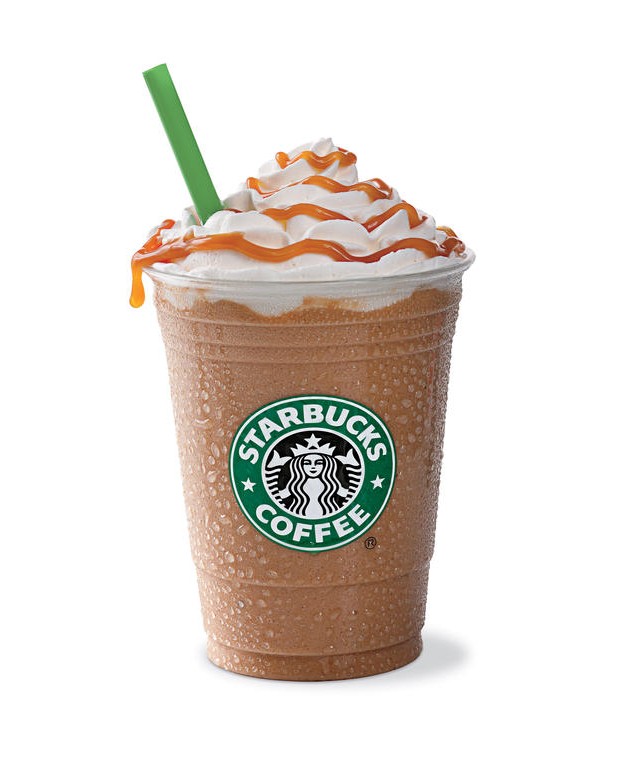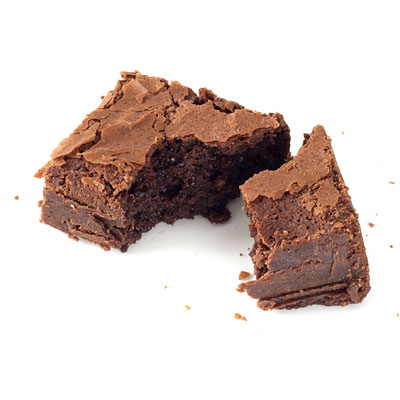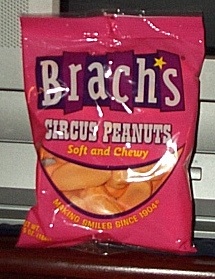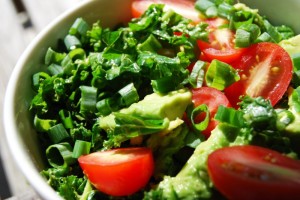If you often grumble about not being full or always being hungry, you may have beachfront property in the world of negative dietary displacement. Are you relying on fake foods to meet your nutrient and satiety needs?
++++
It was cold. It was Ohio. It was 2005. I had just arrived at a graduate student senate meeting. These meetings consisted of, well, grad student issues. Oh yeah, and they always served lunch.
As the meeting began and lunch was served, hungry grad students swarmed the food table. I observed what appeared to be a lean, healthy and fit female grad student approaching the table. She selected a good sized veggie sandwich and two pieces of fruit.
Her friend, who followed behind her in line, appeared to be overweight, unhealthy and un-fit. Her friend moved through the food line and selected a lunch that consisted of diet Coke and a cookie.
Who cares, you say? Shouldn’t people be allowed to pick whatever they want for lunch?
The dietary displacement gods care and you probably should too. These daily choices can help explain why humans might be getting fatter and more unfit.
What is dietary displacement?
Negative dietary displacement
Have you ever known someone who skips out on a salad with greens, tomatoes, onions, mushrooms, beans, sunflower seeds and flax vinaigrette in order to budget their calories for the scone and Frappucino splurge at Starbucks later that evening?
Welcome to the land of negative dietary displacement. It’s when someone skips out on healthy eats and displaces them with non-nutritious foods.
But even with this displacement, who really cares? I mean, as long as calories are balanced we’ll be just fine, right?
Not necessarily. Negative dietary displacement generally leads to:
- rebound overeating
- lack of satiety
- atrocious nutrient intake
- loss of muscle mass
- low energy levels
- increased body fat
In other words, you feel crummy, you don’t look your best, and on top of that — you’re still hungry! Bummer.

Positive dietary displacement
On the flip side, have you ever known someone who skips out on the massive dessert brownie, or only has a small piece, because they are satisfied from a nutritious meal of whole, real foods?
This is positive dietary displacement: when someone eats enough nutritious food each day, leaving little or no room for the non-nutritious foods.
When people eat this way, it generally leads to:
- consuming the right amount of food for your energy needs
- satiation after meals
- a stellar nutrient intake
- lean muscle development
- high energy levels
- lower levels of body fat
Unlike the negative dietary displacement, you feel good, you look good, and your tummy is happy. Sign me up.

Why is dietary displacement so important?
When individuals are trying to eat healthier, they tend to focus their efforts on what they should be cutting out and restricting.
But what does that really accomplish? Shouldn’t they worry about how in the heck they’re going to eat enough healthy food over the next 24 hours? That’s usually difficult enough.
Humans usually eat about 3-4 pounds of food per day. If we add in enough healthy foods, we won’t have much room left for unhealthy foods. We can use this to our advantage.
Similarly, if you fill your day with activities related to a rewarding career, enriching relationships with family and friends, and personal wellbeing, there isn’t much of an opportunity left to engage in cigar smoking, strip clubbing, and Internet flame wars.
All calories are not created equal
We all know by now that industrialized populations are getting fatter. This can make us fixate on meeting a daily calorie quota. We worry about daily numerical goals instead of food’s quality — about how much we eat, rather than what we eat or how our food contributes to keeping us healthy.
If someone saves their goal number of calories to dine on Hot Pockets, mochaccinos and candy, that’s poor nutrition. But people do this because they realize they only have a limited number of eating opportunities each day. They might not want to “waste” these eating opportunities on foods that don’t taste as good as the Hot Pockets, mochaccinos, and candy they crave.
However, a candy calorie is much different than a kale calorie. “Non-food” calories are more likely to be stored as fat, degrade health, lead to further hunger, lead to further food preoccupation, and low energy levels.
 |
 |
| Can you spot the difference? Your brain and body sure as heck can. | |
What you should know about dietary displacement
A rigorous calorie tally can backfire in more ways than one.
Most people generally know that eating too much each day will cause body fat gains and health problems. When people get too wrapped up in the numbers, they feel like they must save up for the tasty (read: over-stimulating) edible food-like substances. And this is where most dietary displacement originates from. You know, the land of counting points, calories and grams.
Awareness of calories = probably good. Detailed calorie counting = probably not so good.
Appetite
It’s interesting to note that one of the most important factors related to dietary displacement (and nutrition success) lies just beyond our direct dietary control. This factor is appetite.
Most people feel as if they have no control over their appetite. So they either ignore it (which never works in the long run, even for veterans of the physique world) or they try to find a magic supplement that helps control it (yes, people still do that).
But we all have some control over our appetite. You see, appetite isn’t primarily controlled by the number of calories we eat. Rather, it’s controlled by the volume of food that we eat.
Simply put, our appetite is based on how much total food volume passes through our digestive tract.
If a lot of food volume passes through, we’re satisfied.
If very little passes through, we’re hungry (note: this is in regard to true physiological hunger, not “head hunger.” “Head hunger” is when someone eats for reasons other than physiological hunger; you can’t satisfy “head hunger” with food and drink).
Therefore, the volume/weight of foods seems to be more important than the calorie content in terms of keeping us fuller for longer during the day.
So, if you consume 3-4 lbs of scones, candy and Frappucinos each day, you could easily rack up a lot of extra calories that’ll need to be stored somewhere. On the other hand, you could eat 3-4 lbs of nutritious, whole food that easily keeps you full but promotes health and fat loss at the same time.
“But I’m never full!”
Maybe you’re eating the wrong foods.
Here is an example of how the volumes of healthy vs. unhealthy foods can differ.
Each pair below has the same amount of calories, but provides much different volumes and nutrients.
| Less volume, fewer nutrients | vs | More volume, more nutrients |
|---|---|---|
| 2 oz chocolate bar | vs | ~40 cups of spinach |
| 2 tbsp butter | vs | 2.5 cups blueberries |
| 1 bagel | vs | 1.5 cups of quinoa |
| ½ cup shredded cheddar cheese | vs | 4 cups of vegetable soup |
| 6 donut holes | vs | 4 medium apples |
Summary and recommendations
Are you eating 90 percent nutritious, unprocessed food and 10 percent treats — or vice versa? Are you displacing healthy foods with unhealthy alternatives?
How’s that working for you?
If we focus on first eating the nutritious foods that our bodies need to feel energized, fight disease, be lean and be healthy, followed by simply enjoying a treat here and there, we’d be much better off.
However, many people don’t eat any of the nutritious stuff. They go right for the treat foods.
If we skip breakfast, get really hungry, and then pick up candy, chips and soda at the gas station – we’ll have a candy, chip and soda body to show for it. However, if we first ate real, nutritious food and then enjoyed a treat, we’d be able to regulate our appetite and make smart decisions.
It’s time to start displacing the poorer food selections from your menu with better ones — instead of the opposite. Eat enough nutritious stuff first. And if you desire a less-than-nutritious food option, have the nutritious one beforehand, and then see how you feel.
Want help becoming the healthiest, fittest, strongest version of you?
Most people know that regular movement, eating well, sleep, and stress management are important for looking and feeling better. Yet they need help applying that knowledge in the context of their busy, sometimes stressful lives.
Over the past the past two decades, we’ve used the Precision Nutrition Coaching method to help over 150,000 clients lose fat, get stronger, and improve their physical and mental health… for the long-term… no matter what challenges they’re dealing with.
It’s also why we work with health, fitness, and wellness professionals (through our Level 1 and Level 2 Certification programs) to teach them how to coach their own clients through the same challenges.
References
Click here to view the information sources referenced in this article.


Share